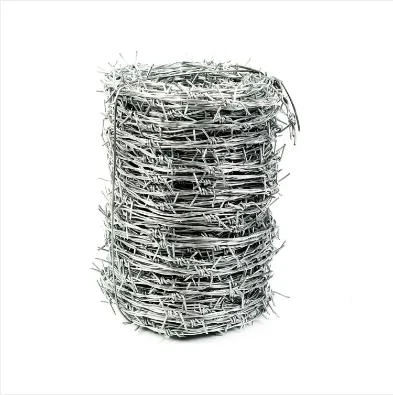nov . 09, 2024 08:51 Back to list
Understanding Different Types of Construction Nails for Your Building Projects
The Importance of Construction Nails Essential Elements of Building
When we think of construction, what often comes to mind are the large structures, complex designs, and the skilled workers who bring blueprints to life. Yet, there's one element of construction that tends to fly under the radar but is absolutely crucial to the integrity of a building nails. Construction nails, though simple, are indispensable tools that ensure the stability and durability of various structures.
The Types of Construction Nails
Construction nails come in a variety of forms, each designed for specific purposes. The most common types include
1. Common Nails These are the general-purpose nails used for framing and attaching various materials. They are typically larger and thicker, allowing them to hold significant weight and withstand various forces.
2. Box Nails Thinner than common nails, box nails are primarily used for lighter tasks such as attaching thin boards or siding. Their design minimizes splitting, making them ideal for delicate woodwork.
3. Finishing Nails With small heads and slender bodies, finishing nails are used for trim work and cabinetry. Their heads can easily be concealed, providing a smooth, polished appearance to any project.
4. Siding Nails These are specifically designed for exterior applications, featuring a larger head to prevent the nail from pulling through the material. They are often galvanized to resist rust and corrosion.
5. Roofing Nails Equipped with larger heads and often made of galvanized steel, roofing nails are used to secure shingles and other roofing materials, ensuring water resistance and structural integrity.
Choosing the right type of nail for a specific task is critical. Using the wrong nail can lead to structural weaknesses and, ultimately, expensive repairs.
The Science of Nail Design
construction nails

The design and material of construction nails are not arbitrary. Engineers and manufacturers take into account a variety of factors to ensure that nails perform optimally under different conditions. For example, the length of a nail is essential in determining how much weight it can hold. Longer nails delve deeper into the substrates, providing greater stabilization. Additionally, nails made from high-carbon steel can withstand bending and shear forces better than their counterparts.
Furthermore, surface treatments, such as galvanizing, enhance corrosion resistance, making nails suitable for exterior applications where moisture is a concern. This has significant implications in construction, where the longevity of a structure can hinge on something as small as a nail.
The Role of Nails in Construction
Nails act as hidden heroes in the building process. They hold together everything from the skeletal frame of a house to the intricate details of crown molding. Their role extends beyond mere fastening—they contribute to the overall strength and stability of a structure. When building, the arrangement and installation of nails can either enhance or compromise the load-bearing capacity of elements like beams and joists.
Moreover, nails are essential in securing a variety of materials, including wood, drywall, and metal. In modern construction, nails are often complemented by other fasteners such as screws and bolts, but their fundamental purpose remains unchanged.
Innovations in Nail Technology
As construction technology progresses, so too does the design of nails. Innovations, such as collated nails used in nail guns, have revolutionized the speed and efficiency of construction. These nails are connected in strips and automatically fed into a gun, allowing for quicker installation, which is particularly useful on large projects.
Furthermore, the introduction of specialized nails, like those with self-tapping features or chemical coatings, reflects the industry's adaptability and the continual quest for better materials. These advancements not only enhance performance but also contribute to cost-effectiveness in construction projects.
Conclusion
In conclusion, while they may seem like small and inconspicuous components, construction nails play an essential role in the building industry. From providing structural integrity to aiding in the assembly of various materials, nails are foundational to every construction project. Understanding the different types, functions, and innovations in nail technology allows contractors, builders, and DIY enthusiasts to make informed decisions that contribute to the safety and longevity of their constructions. In the world of construction, it’s often the simplest tools that make the biggest impact.
-
The Role of Field Wire Fence in Grassland Conservation
NewsJul.15,2025
-
Stainless Steel Razor Wire Durability in Coastal Environments
NewsJul.15,2025
-
Enhancing Home Security with Mesh Fences
NewsJul.15,2025
-
Diamond Mesh Wire for Small Animal Enclosures
NewsJul.15,2025
-
Common Wire Nail Tensile Strength Testing for Woodworking
NewsJul.15,2025
-
Barbed Wire Corrosion Resistance Galvanization Techniques
NewsJul.15,2025









